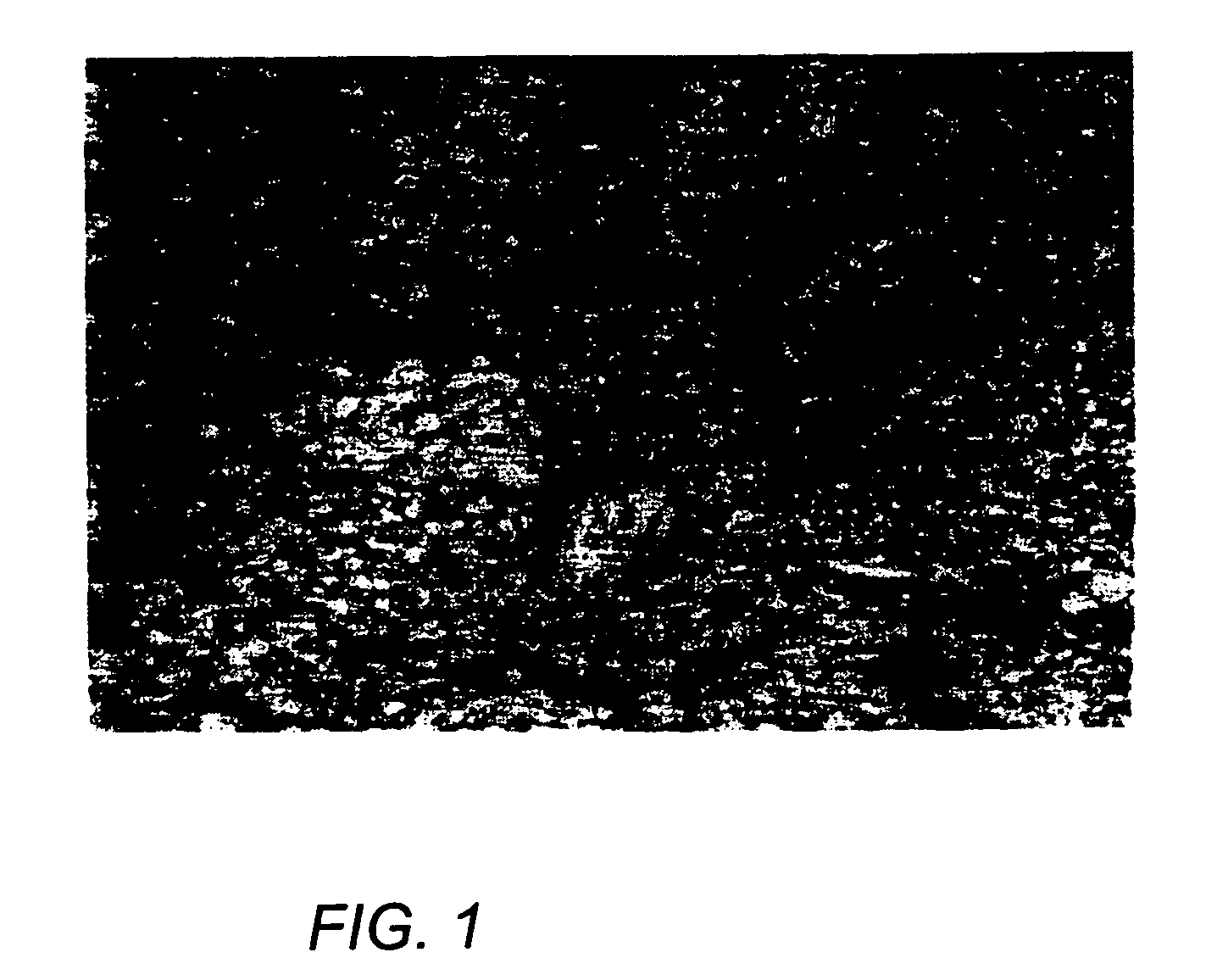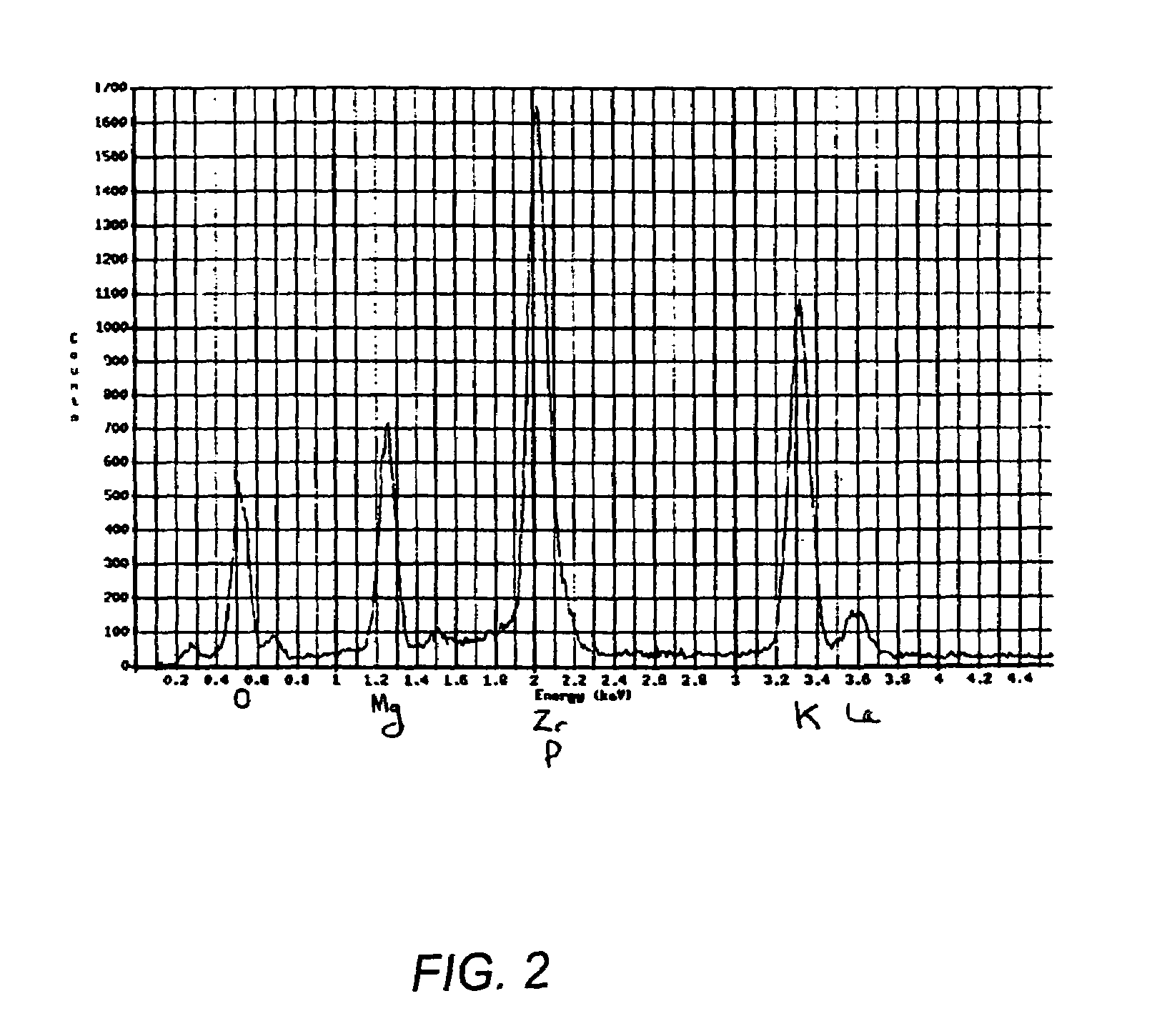Ceramicrete stabilization of U-and Pu-bearing materials
a technology of u- and pu-bearing materials and ceramics, applied in the field of ceramics, can solve the problems of high temperature treatment, high cost and opposition of many communities, and interfere with the formation of monolithic ceramics or glass
- Summary
- Abstract
- Description
- Claims
- Application Information
AI Technical Summary
Benefits of technology
Problems solved by technology
Method used
Image
Examples
example 1
[0026]Normally, Ce is considered to be a surrogate of Pu or U; thus, the surrogate of UF4 will be CeF4. In practice, however, CeF4 is a very insoluble compound and will therefore not leach out in the leaching tests. The forms need to be tested in a worst-case scenario in which if the encapsulation is not perfect, it can be detected through the leaching of the surrogate of the contaminant. For this reason, ZrF4 was used as the surrogate of PuF4, because ZrF4 is soluble and hence can be immediately detected in the leaching tests.
[0027]ZrF4 was added to the mixture of MgO and KH2PO4 at a loading of 10 wt. %. This translates into actual loading of PuF4 at a loading of 17.5 wt. %, which far exceeds the STL criterion. The STL objective is to make the material less attractive by making useful amounts of TRU's harder to recover. The specific criteria for achieving STL may become less important as security is increased at WIPP to control access to the waste materials there. Samples were cure...
example 2
[0032]To simulate Rocky Flats Energy Technology site (RFETS) Item Description Codes (IDCs) 060, Plutonium Oxide, and 067, Chlorinated Oxide, the composition given in Table 1 was used as the surrogate, based on the composition of the residue as Pu=67.87 wt. %, NaCl / KCl=17 wt. %, W=0.5-5 wt. %, and Am, Fe, Ni as traces. Because the molar weight of CeO2 is only 0.6 times that of PuO2, the surrogate composition was altered so that there was the same molar percentage of the simulated actinide in the surrogate. Such a formulation has two advantages: it correctly represents the molar concentration of the actinide and it provides a much higher percentage of the salts in the composition, thus simulating the worst-case scenario for salt stabilization. The implication is that if this material is stabilized with its very high salt content, then stabilizing the real material with its lower salt content should be easier.
[0033]
TABLE 1Composition of chlorinated oxide surrogateComponentsWeight. %CeO...
example 3
[0036]To simulate contaminated acid, i.e., HCl, concentrated HCl was used as the surrogate and conducted the tests.
[0037]During stabilization of concentrated HCl, the HCl effectively reacts with MgO from the binder and forms MgCl2 that is then encapsulated in the Ceramicrete matrix. The reaction may be represented by
MgO+2HCl=MgCl2+H2O.
[0038]This equation implies that two moles of HCl will produce one mole of H2O. Because of this additional water produced during the reaction, the amount of water required to be combined with in the Ceramicrete® binder to form a slurry was reduced, and because some MgO is consumed in binding HCl this way, proportionately more MgO was added to the entire blend. The composition is given in Table 2.
[0039]Boric acid was added to retard the reaction so that practical ceramics could be made. Without boric acid, the reaction is too fast and is highly exothermic. By adding boric acid, the reaction was slowed to allow a mixing and pouring time of 10 minutes.
[00...
PUM
| Property | Measurement | Unit |
|---|---|---|
| time | aaaaa | aaaaa |
| pH | aaaaa | aaaaa |
| weight | aaaaa | aaaaa |
Abstract
Description
Claims
Application Information
 Login to View More
Login to View More - R&D
- Intellectual Property
- Life Sciences
- Materials
- Tech Scout
- Unparalleled Data Quality
- Higher Quality Content
- 60% Fewer Hallucinations
Browse by: Latest US Patents, China's latest patents, Technical Efficacy Thesaurus, Application Domain, Technology Topic, Popular Technical Reports.
© 2025 PatSnap. All rights reserved.Legal|Privacy policy|Modern Slavery Act Transparency Statement|Sitemap|About US| Contact US: help@patsnap.com


